By Dominion Bridge
For some strange reason we’re crazy about bridges. Older spans, of course, are the ones we search out the most, but we even find modern examples fascinating. Not everyone shares this strange obsession it seems. Of all the varied subjects covered on the BIGDoer.com website, articles on bridges are the least read. Oh well! We do it ’cause we love it I guess.
This example crosses the Red Deer River west of Big Valley Alberta (sorta SE of the city of Red Deer), a scenic “Alberta Badlands” setting if there ever was one. Fall colours help add punch.
This fine old structure was built by Dominion Bridge. Of the the companies that manufactured these structures, they were the most prolific and examples of their work can be found all over the province (the and country). This particular one came from their Winnipeg Manitoba plant. The firm had many factories across the nation, manufacturing all manner of steel-works, with that one concentrating on modest sized road and rail bridges for use in Western Canada.
The plant still stands, although bridges are no longer made there (the market dried up some time ago) and is now under other ownership since Dominion Bridge as a firm ceased to be a while ago (early 2000s). The peak production of the Winnipeg Plant was the 1920s and again during Wold War Two.
We scoured company records, and those of Alberta Transportation, well all those available to us, and could not find when this bridge was built. The style of construction suggests the 1910 or 1920s however. While Dominion Bridge adorned each span with a builder’s plate, and the ones on this example are still in place, they typically don’t show the construction date, or even a serial number.
This bridge would have been built and then disassembled for shipment on rail cars for delivery to the nearest siding (Big Valley? A rail line to the west?). From there it’d be hauled by horse team or maybe truck, to the final site for reassembly. As was typical of the time, the bridge uses riveted construction. Wood planking is used for decking, which was also the norm back then. This allows for simple maintenance – individually, boards can be replaced quickly and easily as they wear out.
The bridge can be found along Highway #590, a secondary east/west route. It was not always paved and documents found suggest it was gravel into the 1950s.
The bridge deck is narrow, a little more than one lane, but by no means two. I guess two opposing vehicles could pass at the same time, if they went slow and each hugged the outer edge. Not a good idea. For safety, the rules dictate caution, instructing one to yield to opposing traffic already crossing. Given the road is not that busy, this arrangement works fine.
The bridge is made in a Parker Truss (sub-type of the Pratt) design, a common form for road and railway bridges in the first few decades of the twentieth century. The only difference between a Parker and a true Pratt is the upper cords – in the Parker they’re arched, in the Pratt, straight and parallel with the bottom cord. A Parker is lighter without sacrificing strength, but is a bit more complex to build than the Pratt.
Sometimes a Parker is called a Parker-Camelback. The two designs are similar and many bridge-types use them interchangeably (we’re even guilty of this) even though technically there are some differences between them, albeit minor. The Camelback has exactly five top cords where as a Parker can have some other number. This bridge documented here has seven per span – there are two supported by an intermediate pier.
This bridge is a through design meaning there are cross members above and over the deck. While this makes for a stiff structure, it imposes dimensional limits. Not a huge issue on back roads I guess.
The Parker, and more common Pratt Truss design, fell out of favour some time ago although many remain. Today most bridges of this size are a deck design (open to the top) and are made of concrete and steel or maybe concrete alone.
The bridge is painted in “government colours”, a light blue/green-ish shade that seems to adorn all old metal highway spans like this. There is some superficial corrosion to be seen so it might be time for a repaint. The bottom half, where it gets sprayed by water, mud, snow and worst of all, salt, by passing vehicles, shows the most rust.
More bridges…
East Coulee’s historic wood bridge.
Bridge Hunting – Rosebud River Valley.
Collapsed Bonnybrook train bridge.
If you wish more information on what you’ve seen here, by all means contact us!
Date: October, 2015.
Location: Red Deer River, west of Big Valley Alberta.
Article references: Dominion Bridge archives, Alberta Transportation.
The bridge can be easily viewed from a nearby campground.
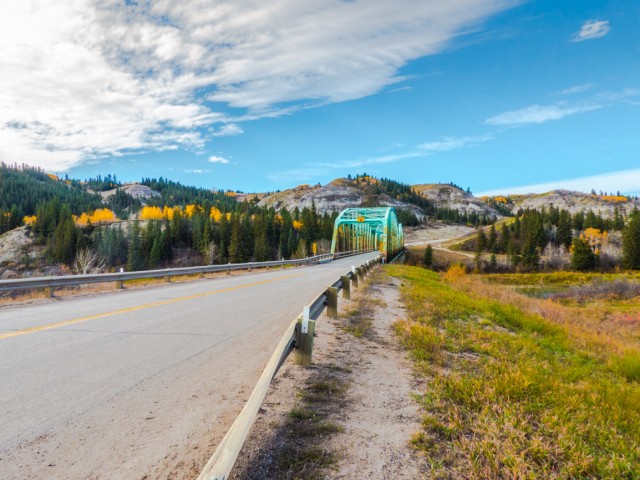
Our subject, built by Dominion Bridge, near Big Valley Alberta.
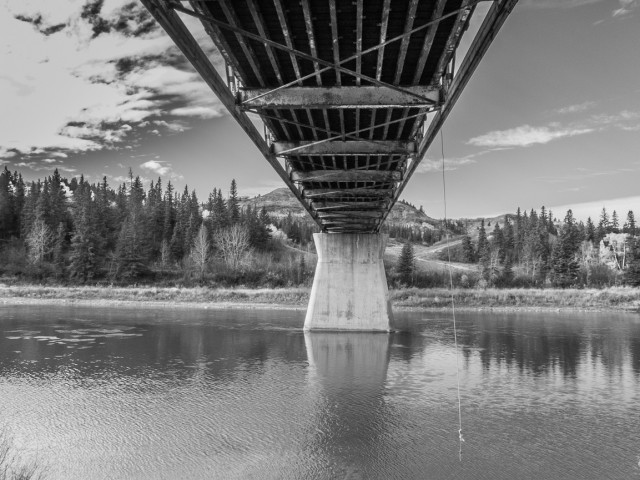
It spans the Red Deer River. Note the rope swing.
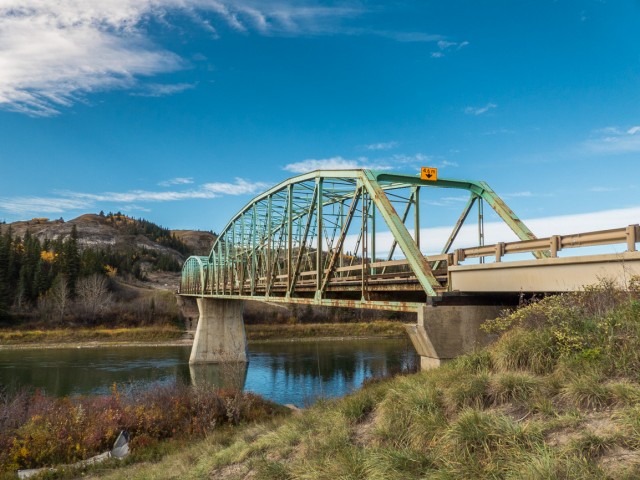
It’s a Parker Truss design. a common form back in the day.
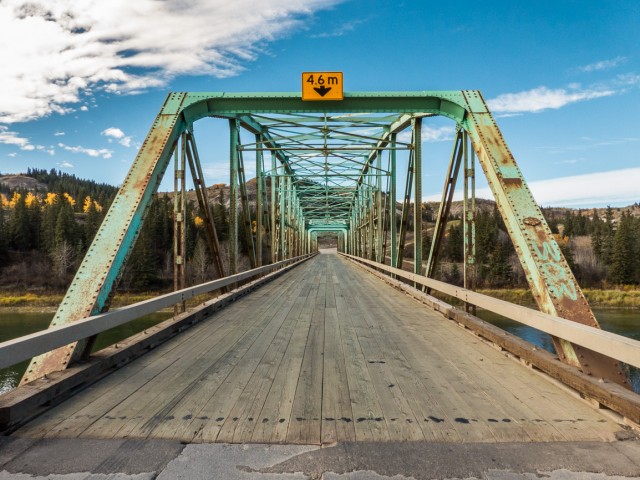
The narrow deck – wood planks are easy to maintain.
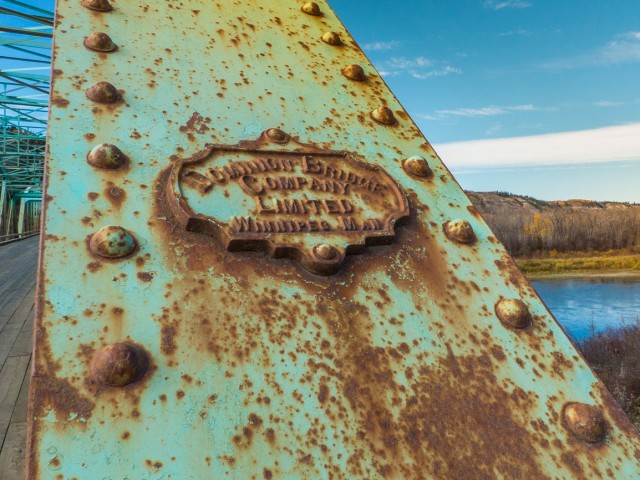
The maker’s plate. Dominion Bridge of Winnipeg Manitoba.

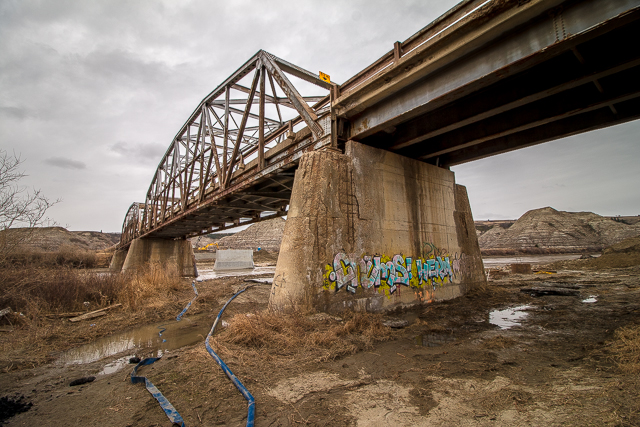
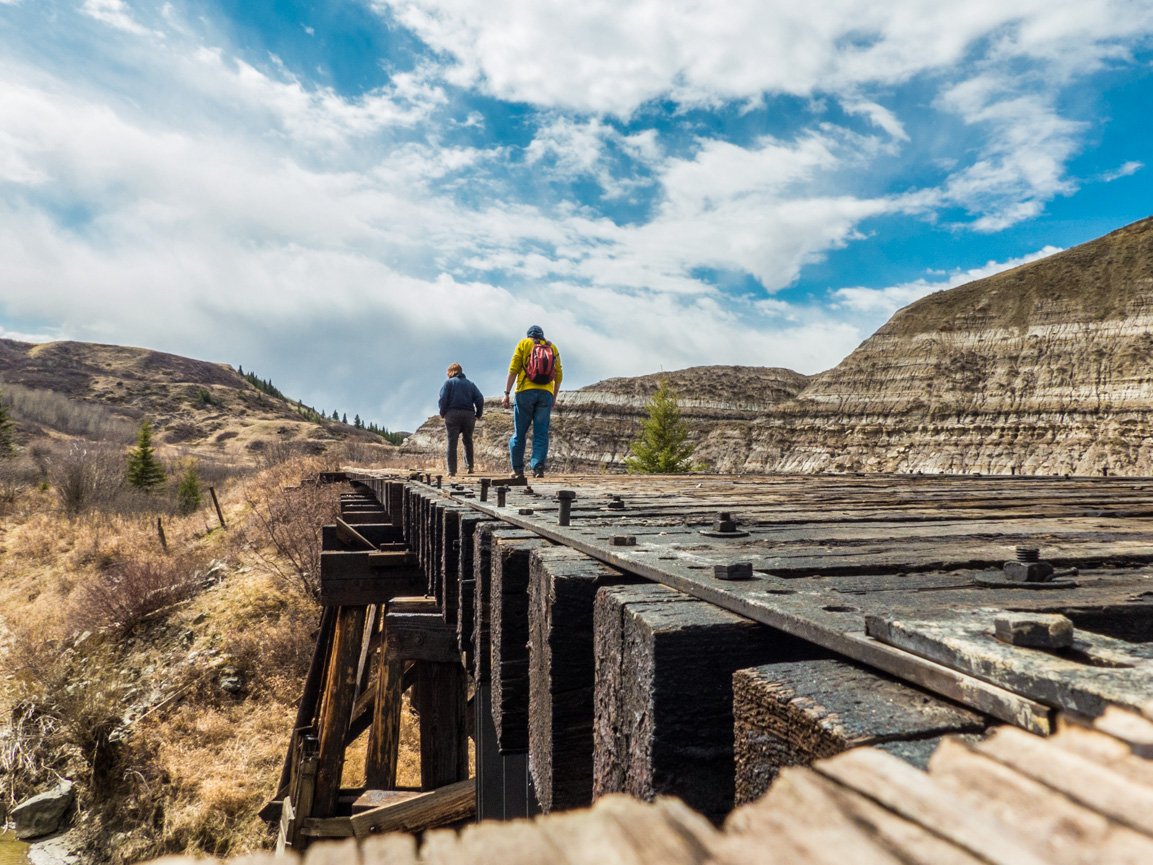
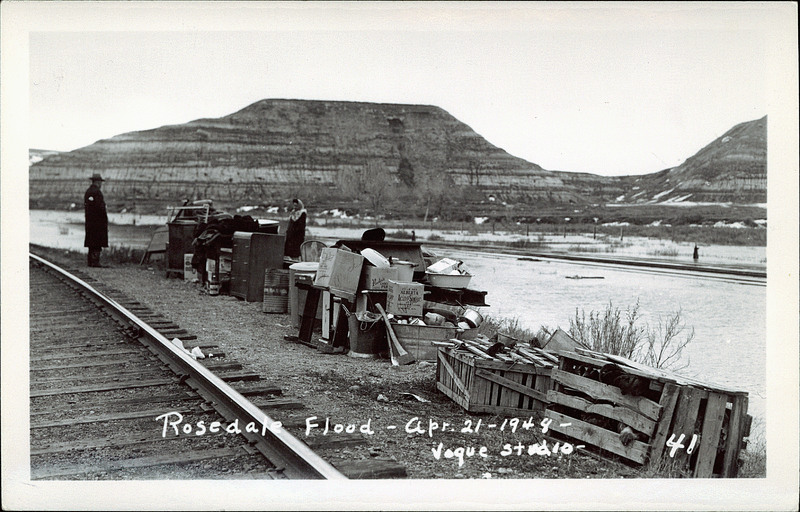
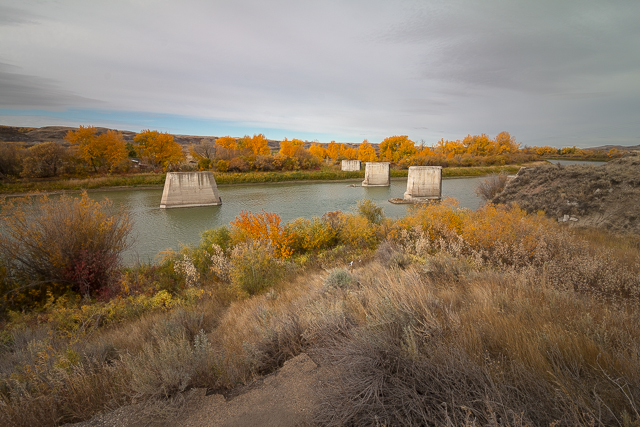
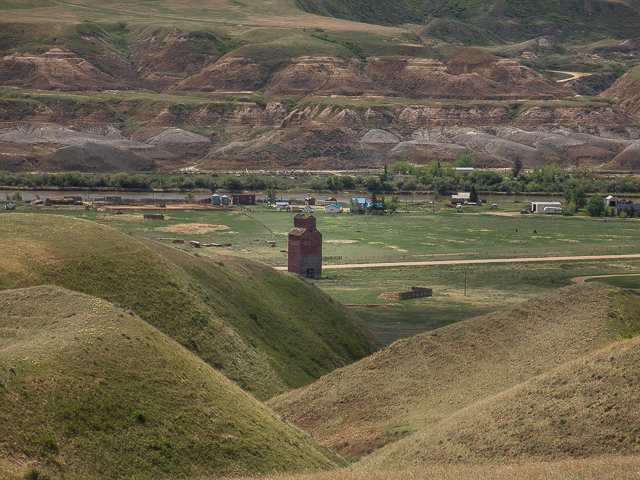
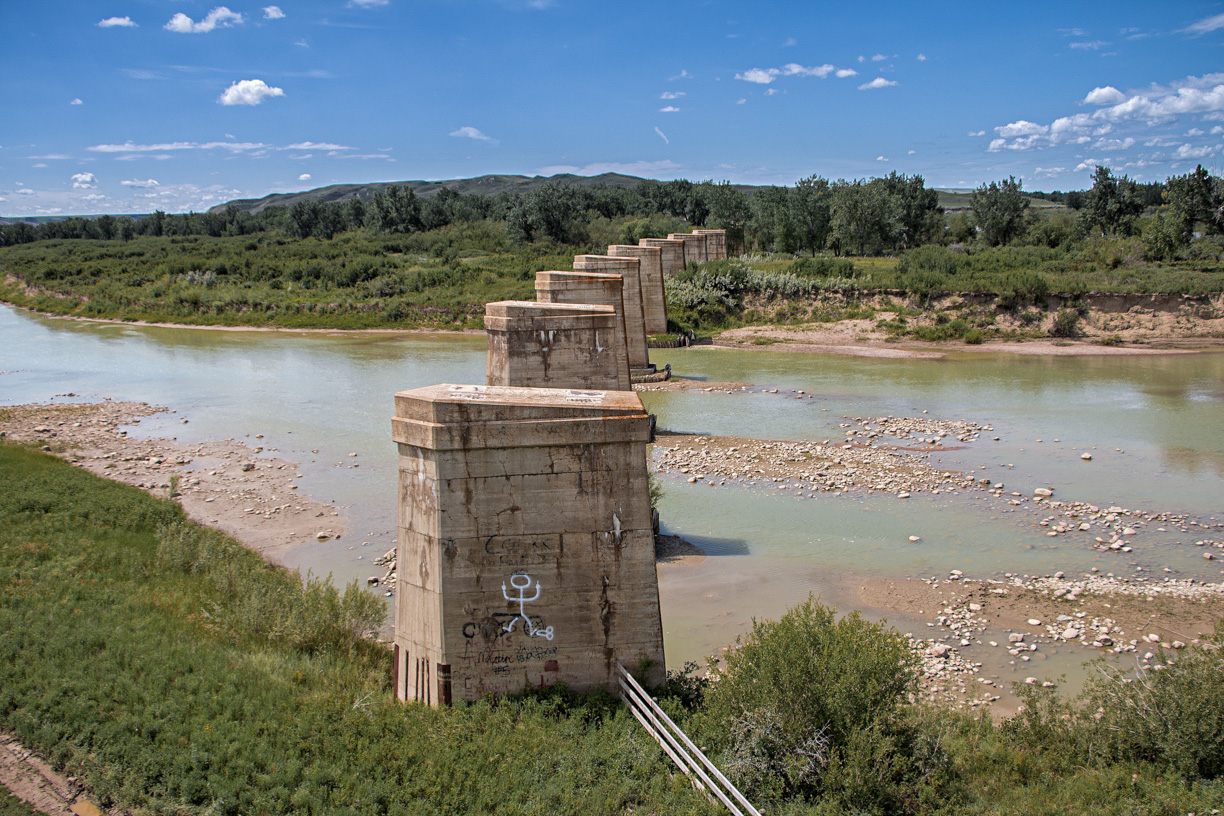
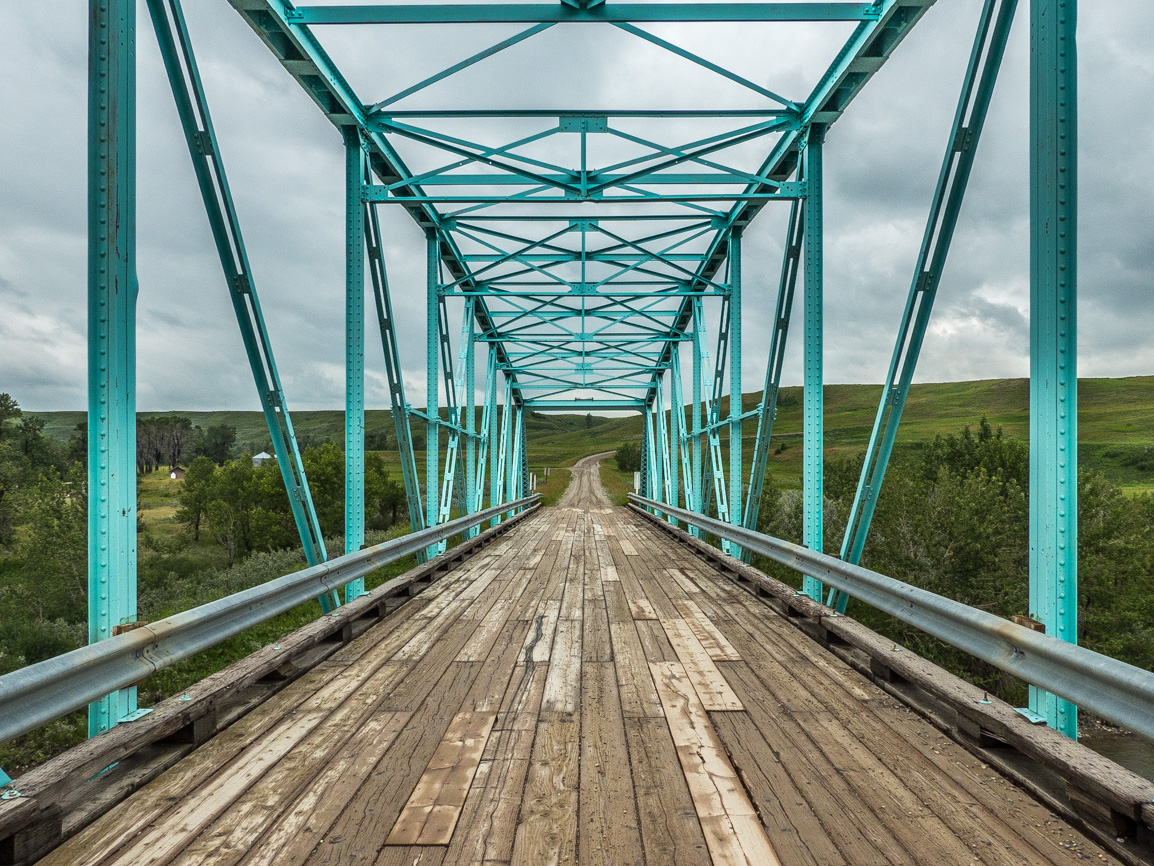
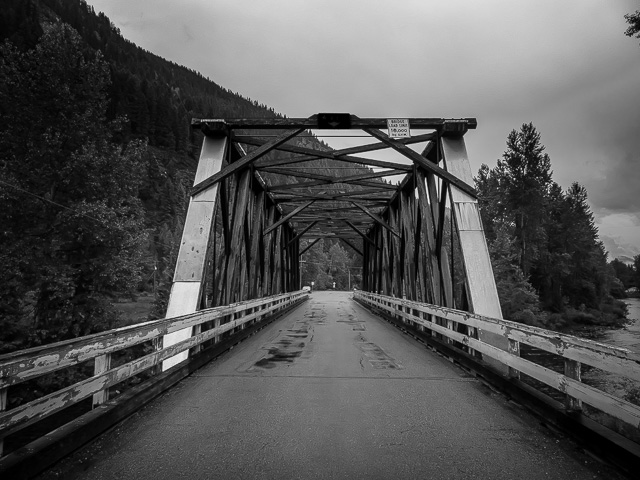
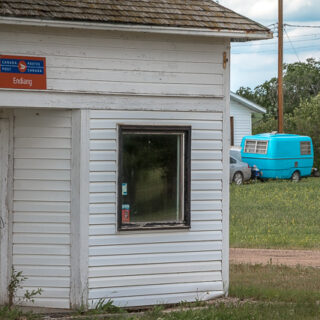
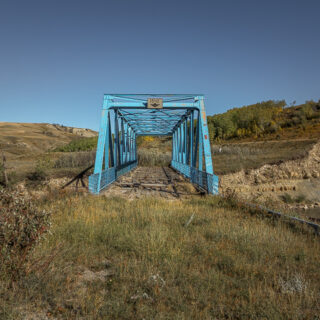
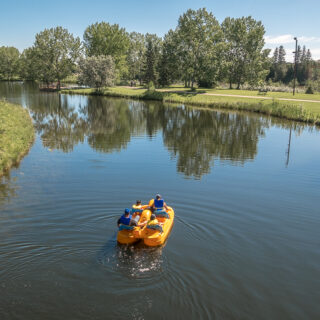
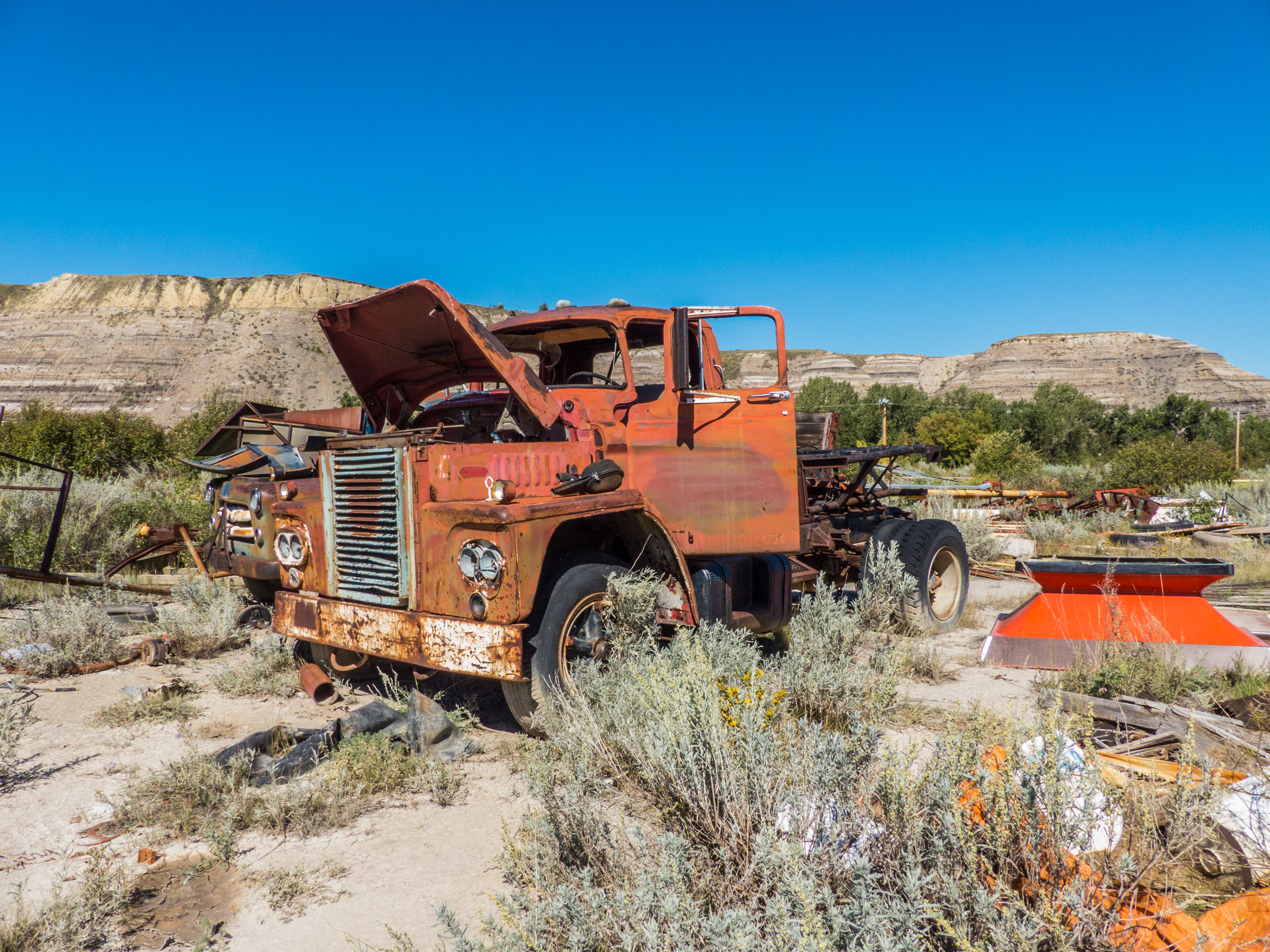
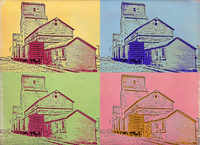





Worked for DB in To, as production planner, motto on the floor was ” We stand behind our bridges, not underneath them”
Hilarious!!! Thanks for that little tid-bit.
One more like it west of Claresholm AB.
There are a lot of similar bridges out there across the province. Hundreds of them I’ve been told.
I shared this because my Grandpa worked for Dominion Bridge.
Awesome, we’d love to know which plant.